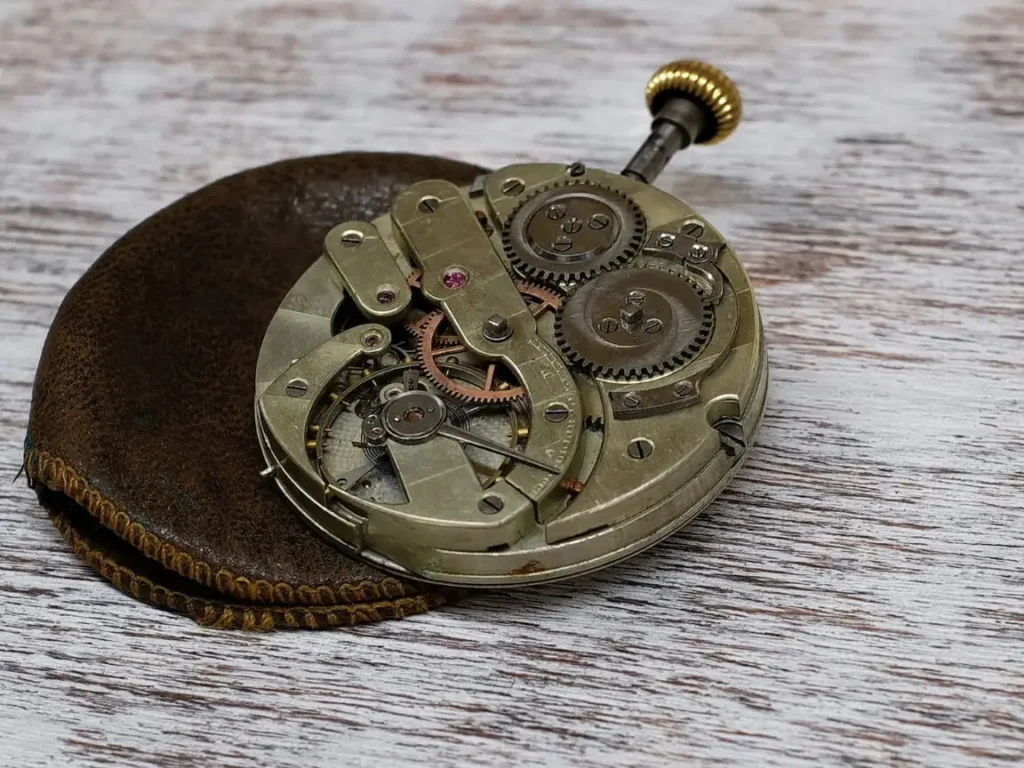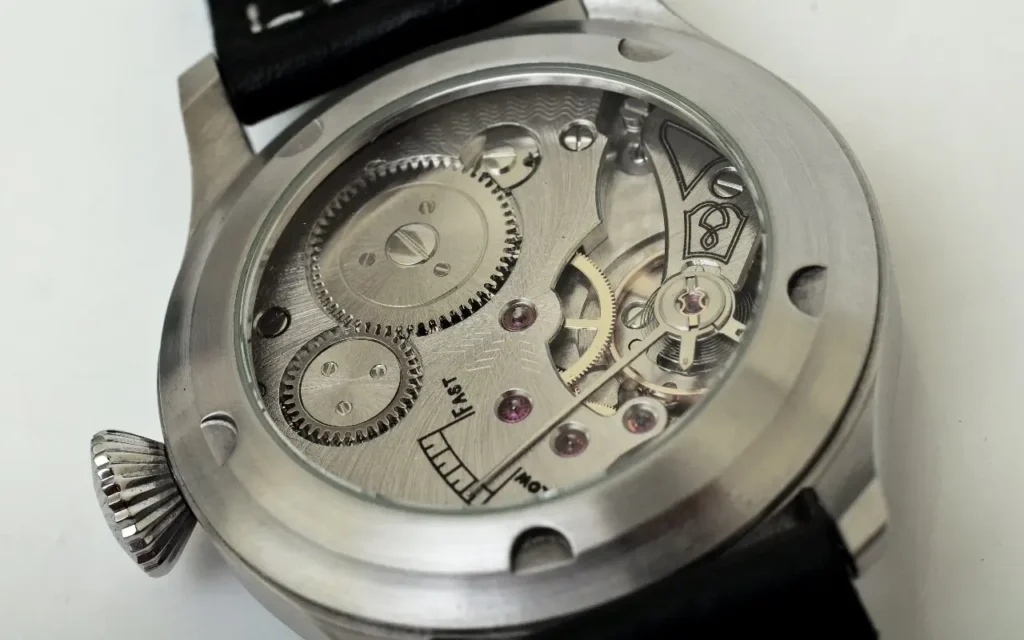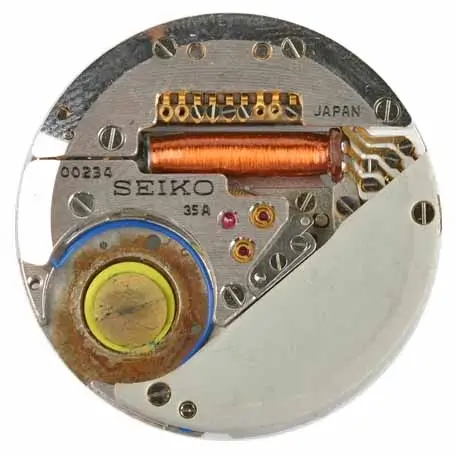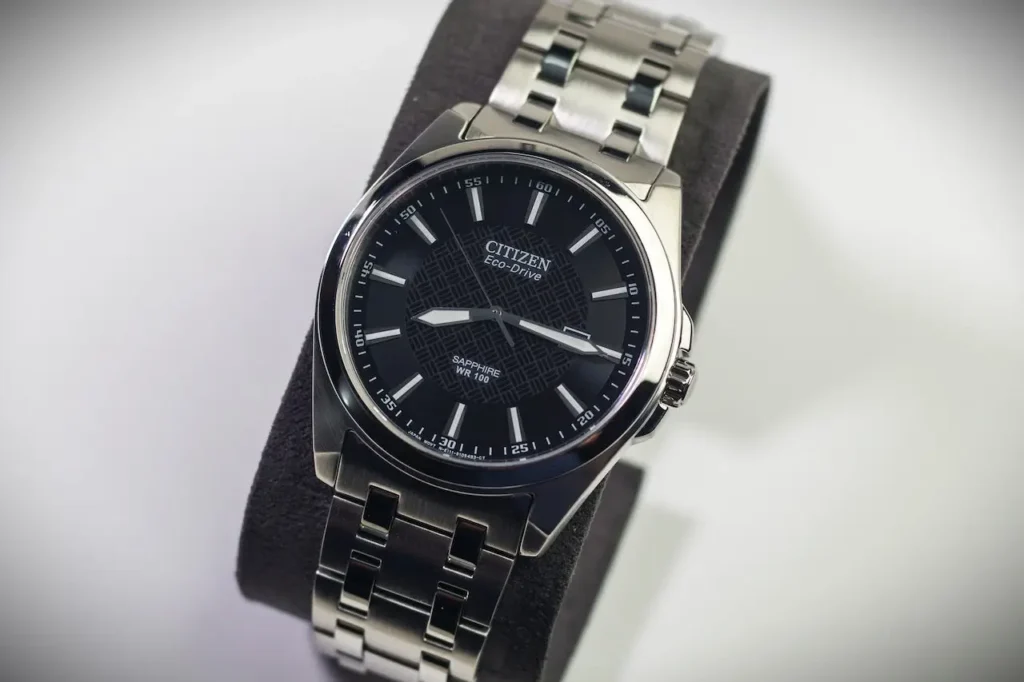Watch Movement Types: Which One to Choose?
Every watch has a story to tell, and at the center of that story is its movement—the intricate mechanism that keeps time ticking and makes your watch come alive. If you’ve ever wondered what goes on behind that polished dial, you’re in for a treat.
Watch movements are more than just engineering; they’re a blend of art, science, and history. Whether you’re buying your first watch, expanding your collection, or just curious, understanding these inner workings can elevate your appreciation for timepieces.
In this guide, we’ll break down the types of watch movements, explain how they work, and help you choose the one that’s right for you. By the time you’re done reading, you’ll not only know what makes a watch tick—you’ll understand why it matters.
Contents
What Is a Watch Movement?
In simple terms, the watch movement is the internal mechanism that drives the watch’s hands and powers other functions like the date, chronograph, or moon-phase display. It’s what makes a watch tick—literally and figuratively.
Think of the movement as the engine of a car. Without it, the watch is just a decorative piece. Movements come in different types, each with its own pros, cons, and ideal use cases.
Types of Watch Movements
1. Manual Movements
A manual movement is a traditional mechanical watch mechanism powered by a hand-wound mainspring. This spring stores energy, which is gradually released to move the gears and keep the hands ticking with precision.

How it works:
- You wind the watch manually using the crown.
- The mainspring transfers its energy to a gear train, which moves the hands on the dial.
- A balance wheel ensures a smooth and consistent motion.
Key features:
- No battery required.
- Smooth sweeping motion of the second hand (typically 5–10 ticks per second).
- Often handcrafted, showcasing exceptional artistry.
Pros:
- Long-lasting (with proper care, manual mechanical watches can last decades).
- Traditional and elegant, often valued by collectors.
- Environmentally friendly since no batteries are used.
Cons:
- Requires regular winding (usually every 24–48 hours).
- Maintenance can be costly due to its complexity.
Best for:
Those who appreciate traditional craftsmanship and don’t mind the responsibility of regular winding.
2. Automatic Movements
An automatic movement is a type of mechanical watch mechanism that winds itself using the natural motion of your wrist while you wear it. Also called a self-winding movement, it eliminates the need for manual winding.

How it works:
- A rotor (a semi-circular weight) moves with the motion of your wrist, winding the mainspring.
- If worn daily, the watch stays powered without manual winding.
Key features:
- Similar craftsmanship as manual mechanical movements but is more convenient.
- The same smooth sweeping motion of the second hand.
Pros:
- No need for manual winding (though some models allow it as a backup).
- Retains the elegance and tradition of manual mechanical watches.
Cons:
- Slightly less precise than quartz movements.
- Requires regular use or a watch winder to keep it running.
Best for:
Automatic watches are perfect for those who want the charm of a mechanical watch without the hassle of manual winding.
3. Quartz Movements
Quartz movements are powered by a battery and use a quartz crystal to keep time. This is the most common and affordable type of movement.

How it works:
- The battery sends electricity to the quartz crystal, causing it to vibrate at a precise frequency (32,768 vibrations per second).
- These vibrations regulate the movement of the hands.
Key features:
- Highly accurate timekeeping (deviation of a few seconds per month).
- Low maintenance compared to mechanical movements.
- Tick-tick motion of the second hand, unlike the smooth sweep of mechanical movements.
Pros:
- Affordable and widely available.
- Lightweight and durable.
- Requires little to no maintenance apart from battery replacement every 1–3 years.
Cons:
- Lacks the artistry and tradition of mechanical watches.
- Battery replacement can be inconvenient for some users.
Best for:
Quartz watches are perfect for users who prioritize accuracy and affordability.
4. Solar-Powered Movements
The solar-powered movement uses light, both natural and artificial, to generate energy to power the watch. The concept, popularized by brands like Citizen (Eco-Drive) and Seiko, eliminates the need for battery replacements, making it an eco-friendly and practical choice.

How does it work?
- A solar panel, often hidden beneath the watch dial, absorbs light and converts it into electrical energy.
- This energy is stored in a rechargeable battery or capacitor.
- The stored energy powers the watch’s quartz movement, ensuring accurate timekeeping.
Key features:
- Light-powered: Works with sunlight or indoor lighting.
- Long-lasting reserve: A fully charged solar watch can often run for months, even in complete darkness.
- Eco-friendly: Reduces waste from disposable batteries.
Advantages:
- No need for regular battery replacements.
- Reliable and accurate timekeeping.
Disadvantages:
- Requires occasional exposure to light to maintain charge.
- Limited availability in luxury watch brands.
Who is it for?
Solar-powered watches are perfect for environmentally conscious individuals or those who value convenience and low maintenance. They’re especially useful for active lifestyles and outdoor activities, where access to traditional charging methods might be limited.
5. Hybrid Movements
Hybrid movements combine traditional analog mechanisms with modern digital features. These are often found in smartwatches with analog displays.
How it works:
- The analog hands are powered by a quartz movement.
- Digital features like step tracking or notifications are powered by a separate module, often rechargeable.
Key features:
- Combines style with functionality.
- May include features like Bluetooth connectivity, fitness tracking, or alarms.
Pros:
- Offers both traditional and modern elements.
- Great for tech-savvy users who want a stylish watch.
Cons:
- More expensive than standard quartz watches.
- Battery life may be shorter due to additional features.
Best for:
Those who want the best of both worlds—traditional design with modern technology.
6. Kinetic Movements
Kinetic movement is a type of hybrid movement that combines the principles of automatic movements with the practicality of quartz. Introduced by Seiko in 1988, kinetic watches use the energy generated by your wrist movement to charge an internal battery, eliminating the need for regular battery replacements.
How it works:
- A rotor inside the watch moves with your wrist.
- This motion generates electrical energy, which is stored in a rechargeable battery (often called a capacitor).
- The stored energy powers the quartz movement, ensuring accurate timekeeping.
Key features:
- No need for manual winding or frequent battery replacements.
- A quartz mechanism ensures precise timekeeping.
- Energy reserve typically lasts for several months when fully charged.
Pros:
- Environmentally friendly—no disposable batteries.
- Offers the accuracy of quartz with the convenience of automatic winding.
- Low maintenance compared to traditional mechanical watches.
Cons:
- Limited availability compared to other movement types.
- The capacitor may require replacement after several years.
Best for:
Eco-conscious users who want an accurate and hassle-free watch with innovative technology.
How to Choose the Right Watch Movement
Choosing the right watch movement depends on your personal preferences, lifestyle, and how much maintenance you’re willing to commit to. With several types of movements available—manual, automatic, quartz, kinetic, and solar-powered—each offers its own set of benefits as we explored above. Here’s how to choose the one that suits you best:
1. Consider Accuracy and Precision
If accurate timekeeping is your top priority, you may want to lean toward quartz or kinetic movements. These movements are powered by batteries or motion and require minimal adjustment.
- Quartz: The most precise and low-maintenance option, perfect for anyone who values accuracy without fuss.
- Kinetic: Offers precision like quartz but is self-charging, so you never need to worry about replacing a battery.
2. Look at Maintenance Requirements
- Manual and Automatic: These movements require more maintenance. Automatic watches need to be worn regularly to stay charged, while manual watches require manual winding.
- Quartz: Requires minimal maintenance and only needs a battery change every couple of years.
- Kinetic and Solar-Powered: Both are relatively low-maintenance. Kinetic watches need only occasional charging, while solar-powered watches just require light exposure to keep running.
3. Evaluate Your Lifestyle
Different movements are better suited to different lifestyles.
- Active Lifestyle: If you’re constantly on the go, a kinetic or solar-powered watch is ideal because it doesn’t require manual winding or battery replacements.
- Outdoor Enthusiasts: Solar-powered watches work well for those who spend time outside, as they can charge from sunlight. Kinetic watches also work well because they harness energy from wrist movement.
- Traditional Watch Lovers: If you’re drawn to classic craftsmanship and don’t mind winding your watch, manual or automatic movements might appeal to you.
4. Consider Eco-Friendliness
If sustainability is important to you, both solar-powered and kinetic watches are excellent choices. Solar-powered watches eliminate battery waste, and kinetic watches don’t require disposable batteries, reducing environmental impact.
5. Choose Based on Watch Design and Budget
- Mechanical Watches are often found in higher-end, luxury designs due to their craftsmanship. They tend to be pricier, but many watch enthusiasts find them worth the investment for their artisanal nature.
- Quartz, Kinetic, and Solar-Powered Watches are generally more affordable and can be found in a wide range of styles, from casual to formal.
6. Look for Battery Life and Energy Reserve
- Quartz and Solar-Powered Watches often feature long battery lives. Solar-powered models can last for months without needing a recharge if they’re charged properly.
- Kinetic Watches store energy in a capacitor and can run for months, even in the absence of movement, before needing to be recharged.
- Mechanical Watches require manual winding or wrist movement to keep running but don’t rely on a battery.
7. Think About the Emotional Appeal
For some, the mechanical movement is a part of the experience, as it represents traditional watchmaking craftsmanship. It appeals to collectors and those who appreciate the artistry of fine movements.
Kinetic and Solar-Powered Watches are often more practical and modern, making them a good choice for those who prioritize convenience without sacrificing style.
Final Thoughts
When it comes to choosing the right watch, understanding the watch movement types is crucial. It’s not just about the timepiece on your wrist—it’s about how it fits into your life, preferences, and needs. Whether you’re drawn to the classic mechanics of a mechanical movement, the precision of a quartz movement, or the eco-friendly convenience of kinetic or solar-powered movements, each type offers something unique.
The best part? There’s no wrong choice. What matters is finding the movement that matches your style, your routine, and what you value most—be it sustainability, precision, or tradition. Watches are personal, and choosing between the types of watch movements is just part of the fun. Take your time to explore your options and find the perfect watch that tells not just the time, but your story.
Frequently Asked Questions About Watch Movement Types
- What’s the difference between quartz and mechanical watches?
Quartz watches use a battery and are highly accurate, while mechanical watches are powered by a mainspring and showcase traditional craftsmanship. - Are automatic watches better than quartz?
It depends on your preference. Automatic watches are elegant and require no battery, but quartz watches are more accurate and practical. - How long does a mechanical watch last?
With proper care, a mechanical watch can last a lifetime or even be passed down to generations. - Do hybrid watches require regular charging?
Most hybrid watches have analog components powered by a battery and digital features that may require charging every few days or weeks.